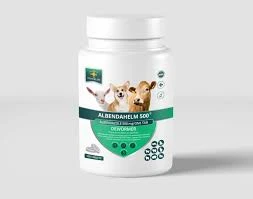- Afrikaans
- Albanian
- Amharic
- Arabic
- Armenian
- Azerbaijani
- Basque
- Belarusian
- Bengali
- Bosnian
- Bulgarian
- Catalan
- Cebuano
- Corsican
- Croatian
- Czech
- Danish
- Dutch
- English
- Esperanto
- Estonian
- Finnish
- French
- Frisian
- Galician
- Georgian
- German
- Greek
- Gujarati
- Haitian Creole
- hausa
- hawaiian
- Hebrew
- Hindi
- Miao
- Hungarian
- Icelandic
- igbo
- Indonesian
- irish
- Italian
- Japanese
- Javanese
- Kannada
- kazakh
- Khmer
- Rwandese
- Korean
- Kurdish
- Kyrgyz
- Lao
- Latin
- Latvian
- Lithuanian
- Luxembourgish
- Macedonian
- Malgashi
- Malay
- Malayalam
- Maltese
- Maori
- Marathi
- Mongolian
- Myanmar
- Nepali
- Norwegian
- Norwegian
- Occitan
- Pashto
- Persian
- Polish
- Portuguese
- Punjabi
- Romanian
- Russian
- Samoan
- Scottish Gaelic
- Serbian
- Sesotho
- Shona
- Sindhi
- Sinhala
- Slovak
- Slovenian
- Somali
- Spanish
- Sundanese
- Swahili
- Swedish
- Tagalog
- Tajik
- Tamil
- Tatar
- Telugu
- Thai
- Turkish
- Turkmen
- Ukrainian
- Urdu
- Uighur
- Uzbek
- Vietnamese
- Welsh
- Bantu
- Yiddish
- Yoruba
- Zulu
Lis . 28, 2024 03:05 Back to list
Ivermectin Injection for Veterinary Applications and Animal Health Considerations
Ivermectin Injection for Veterinary Use An Overview
Ivermectin is a broad-spectrum antiparasitic agent that has gained prominence in the veterinary field for its effectiveness in treating a variety of parasitic infections in animals. Developed initially for human use in the treatment of river blindness and lymphatic filariasis, ivermectin has been a game-changer in the management of parasitic diseases across many species, particularly in livestock and companion animals.
Mechanism of Action
Ivermectin works by interfering with the neuromuscular function of parasites. It binds to glutamate-gated chloride channels and GABA (gamma-aminobutyric acid) receptors in the parasite’s nervous system, leading to paralysis and death of the parasites. This mechanism of action allows ivermectin to target a wide range of parasites, including nematodes, arachnids, and insects. The efficacy of ivermectin has made it a frontline treatment against various external and internal parasites, such as lice, mites, roundworms, and heartworms.
Forms and Administration
Ivermectin is available in several formulations, including oral tablets, topicals, and injectables. The injectable form is particularly popular in veterinary medicine due to its ease of administration and rapid absorption into the bloodstream. The dosage and method of administration can vary depending on the species being treated, the type of parasite targeted, and the severity of the infection.
In cattle and other large animals, ivermectin injection is often used for the control of ectoparasites and endoparasites. The typical injection is administered subcutaneously or intramuscularly. For small animals, veterinarians may prefer oral formulations or topical applications based on the situation and specific health considerations.
Safety and Efficacy
ivermectin injection for veterinary use

Ivermectin is generally well-tolerated by most animals when used at the recommended dosages. However, like any medication, it is essential to consider potential adverse effects and contraindications. Some breeds, particularly collies and other herding dogs, may be genetically predisposed to ivermectin toxicity due to a mutation in the MDR1 gene, impairing their ability to eliminate the drug from their system. Therefore, practitioners must exercise caution when prescribing ivermectin to such breeds, ensuring proper dosages and monitoring for any side effects.
Efficacy studies have demonstrated ivermectin's ability to significantly reduce parasite burdens in treated animals, leading to improved overall health, productivity, and wellbeing. Moreover, its use has approximately mitigated the economic impact of parasitic diseases in livestock operations worldwide. Regular use of ivermectin as part of a parasite control program can enhance animal performance and reduce veterinary costs associated with parasitic infections.
Resistance Concerns
Despite its efficacy, concerns regarding the development of resistance to ivermectin among certain parasite populations have emerged. Over-reliance on this drug, particularly in livestock sectors, can lead to reduced effectiveness over time, necessitating a shift towards integrated parasite management strategies. These strategies may include rotating antimicrobials, utilizing other classes of antiparasitic agents, and implementing management practices that reduce the risk of parasite reinfestation.
Conclusion
Ivermectin injection for veterinary use remains a cornerstone in the fight against parasitic infections in animals. Its broad-spectrum efficacy, coupled with a favorable safety profile, allows for its widespread use across various species. However, as with any pharmaceutical intervention, responsible usage is crucial to maintain its effectiveness and to mitigate the risk of resistance development.
Veterinarians play a vital role in ensuring that ivermectin is used judiciously, incorporating it into comprehensive parasite management plans that consider the specifics of each case. With continued research and monitoring, ivermectin will likely remain an integral tool in veterinary parasitology, supporting the health of animals worldwide and contributing to sustainable livestock practices.
-
Guide to Oxytetracycline Injection
NewsMar.27,2025
-
Guide to Colistin Sulphate
NewsMar.27,2025
-
Gentamicin Sulfate: Uses, Price, And Key Information
NewsMar.27,2025
-
Enrofloxacin Injection: Uses, Price, And Supplier Information
NewsMar.27,2025
-
Dexamethasone Sodium Phosphate Injection: Uses, Price, And Key Information
NewsMar.27,2025
-
Albendazole Tablet: Uses, Dosage, Cost, And Key Information
NewsMar.27,2025













